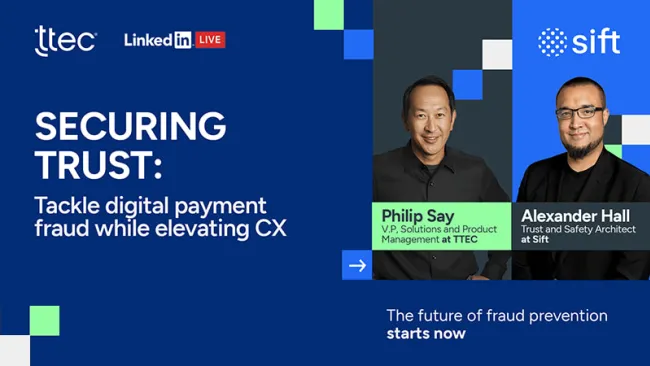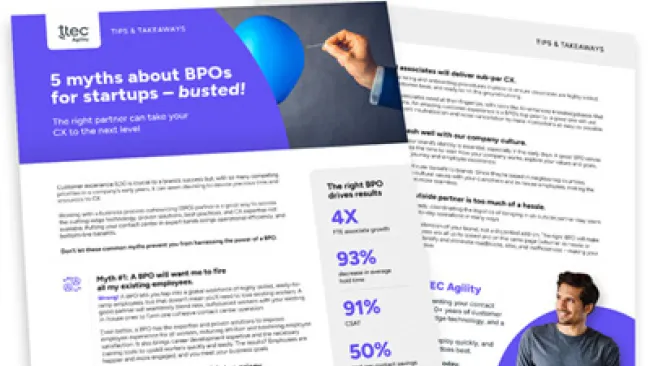The days of focusing solely on products and services in the telecom space are over. Communication and information are now the name of the game. Forward-thinking operators have shifted their position to be "lifestyle providers" to consumers. Internet, phone, data, television, etc., all contribute to a person's life. And consumers live their lives intertwined with many channels. They use their mobile devices. They visit stores. They contact customer service by phone, text, live chat, and more. They talk to their friends online and off. It's a beautifully converged world open to continuous innovation.
In this new business reality, a strong multichannel strategy is about consistent experiences, shared data, and integrated activities that work in customers' best interests. Why? Gaining customer satisfaction is no longer enough. Today multichannel is about creating customer advocates.
Communications have changed dramatically over the past two decades, from a time when a home phone and a handwritten letter were the primary forms of communication to a world dominated by Facebook posts, text messages, and mobile phone calls. Many people have not picked up a home phone, much less written a letter, in years.
Just as our modes of communication have changed dramatically, so, too, has the way that we interact with our communications providers. While many customers will still pick up the phone and dial in to a traditional call center or visit a store to learn more about a phone or plan features, just as many will jump online to research their next purchase or take to Facebook to air their complaints or raves.
With the proliferation of customer interaction channels, communications providers have been pressured to seek more and more outsourced help to manage all of these channels. Many providers employ over a dozen different agencies to manage these interactions. The result: an inconsistent brand message and customer experience that dilute the trust of the customers they are trying to serve. Communication providers need to "take back the brand" and provide a more consistent, transparent customer experience in order to build trust and turn customers into advocates.
Customer advocacy is a lofty goal, but can be achieved as part of a multilevel customer experience strategy using three customer experience triage tiers:
• Silence the detractors
• Build a solid customer experience
• Develop advocates
The first step is to silence detractors. This doesn't mean preventing people from talking or responding to negative opinions. Instead, it's about developing an environment where customers will have no reason to talk badly about a brand. Tactics in this instance are to prioritize where the most negativity is coming from and allocate resources to fix the root cause of the issues. Basically, get the customer experience house in order by focusing on the most complained about moments of truth.
Once detractors are silenced, the next tier is to build a solid and positive customer experience. Create consistent, coordinated interactions across channels to meet customer needs. Develop efficient internal processes, integrate data, and empower employees so customers are satisfied every time they interact with the company. Satisfaction and loyalty are critical to the success of a business. But it doesn't have to stop there. The customer experience end game is advocacy.
Advocacy is different than loyalty or satisfaction. Customer satisfaction is important, but not the most important metric. Satisfaction, after all, is a lagging indicator, not a leading one. And it should be considered table stakes, not a competitive differentiator.
Instead, advocacy goes a step further as a business strategy that places customers' interests ahead of the company's. It is built on trust, and trust is an enduring competitive advantage that pays dividends today and long into the future. In fact, trust has become increasingly important as companies are losing control of the brand message to customers who can reach the masses in an anonymous, everlasting way. Advocacy, built on trust, is one of the single most powerful factors in influencing a customer's buying behavior. Achieving advocacy requires primary research and fact-based analyses of customers and their needs.
Why are advocates so important? They work on a company's behalf to promote the brand, enhance its reputation, and in some cases, drive new business. The goal is to move them up the advocacy involvement scale from mentions through tweets, status updates, and casual word of mouth to influence via blog posts, comments, and direct word of mouth, and then to referral with reviews, blog posts, recommendations, and direct work with the brand as an ambassador.
How to identify potential advocates
Advocates are satisfied and loyal, but the opposite is not necessarily true. Companies need to determine the drivers of advocacy versus customer satisfaction. Satisfaction and advocacy drivers often differ in a call center (see Figure 1).
Three hallmarks of customer advocates differentiate them from simply being a supporter, influencer, loyalist, or satisfied customer:
• Supports and is loyal to the brand: An advocate will stand by the brand even in times of difficulty, isn't afraid to react to criticism or correct factually incorrect statements about the brand, and will purchase brand products as gifts for friends and family.
• Recommends and actively promotes the brand: Advocates share their experiences via various social media, openly praise the company's employees, and provide unsolicited feedback on service and quality. In some cases, they consider themselves "brand protectors."
• Is emotionally attached to the brand: They have a sense of "ownership" in the brand. They don't rely solely on price when buying products and they treat the brand as part of their inner circle.
How to build advocates
It's more difficult to identify and build advocates than it is to simply satisfy them. A positive customer experience may satisfy a customer, but to build advocates, firms need to up the ante. An unusual or exceptional interaction is a great way to build advocates. For example, many telcos have some type of "president's escalation desk" but very few issues end up there. Usually just the few issues that catch someone's eye or, more likely, that happened to a friend of an executive ever reach the special issues desk. However, formalizing this feature to involve more customers will create a unique experience that will go a long way to build advocates.
Brands must be willing and able to go that extra mile when customers don't expect it. In return, they will reward that brand over the long term in the form of advocacy.
Companies must first understand what drives advocacy among their customers. Within the telecom space, advocacy drivers may include the reliability of the network, the appeal of the device, price value, and customer service. Companies can determine the importance of certain activities or elements within these categories—such as first-call resolution, the in-store purchase experience, the percentage of dropped calls, and the battery life of a device—in influencing whether customers become advocates. By identifying the gaps in specific initiatives across channels, telecom companies can make changes that will influence customer advocacy.
Customer advocacy factors are often more "emotional" than tangible and require different solutions than improving traditional customer experiences. For instance, a proactive call from an empathetic customer service rep verifying that an issue was resolved can sometimes contribute more to advocacy than the issue resolution itself.
The process of creating an advocate, however, depends on the level of customer engagement that already exists (see Figure 2). Customers sit on a spectrum, from indifferent on one side to advocates on the other. For indifferent customers, emphasize the value they receive over the price paid and create specialized services addressing their specific needs. For customers who already feel fulfilled, create emotional connections between them and the brand. Meanwhile, committed customers should be encouraged to become members and participate in the customer community, which can create "networking" opportunities. Of course, these are highlevel suggestions. How companies specifically interact with customers to build advocates is often complex and will be unique to a specific brand and its customer attributes.
A strong multichannel strategy can help move customers along the advocacy spectrum. Meeting their needs in their preferred channel and across channels is a strategy tailor-made for current customers with whom you want to strengthen the relationship. Companies that already have a relationship with customers have data about them (and permission from them), and can therefore use a marketing or service experience to build advocacy.
Victoria's Secret understands this. The company has an active online community for its Pink brand that encourages users to upload their latest style pictures. The company makes it even more personal on Facebook, where users can send others the latest Victoria's Secret poster. The company garnered more than 40,000 followers on Twitter, where it shares news and responds to user thoughts and requests. And don't forget its world-class in-store experience.
Be aware, however, that the attributes of an advocate are not the same for all customer groups. Different customer groups are advocates for different reasons. For example, one telecom identifies its "power enthusiasts" advocate group as customers who are educated and affluent tech enthusiasts who need to multitask and stay on top of busy schedules. They have high average revenue per user (ARPU) and buy high-end devices. Another equally important advocacy group is "connected frugals," who love to connect socially, are talkative, comfortable with tech, and like to be organized and self-express. They may have a lower ARPU than the other group, but their propensity to spread positive word of mouth makes them very valuable. Each has different needs and must be treated differently to maintain their advocacy. For instance, power enthusiasts may consider personalized device training sessions valuable, while connected frugals may prefer a dedicated virtual relationship manager.
The more a company can understand the needs of different groups of advocates, the better prepared it will be to identify new advocates and replicate activities to build customer advocacy.
Bottom-line impact
Advocacy isn't just a feel-good initiative. It can drive both direct and indirect value to the company while strengthening customer relationships. Customers each have economic lifetime value (see Figure 3). The traditional views of customer lifetime value have taken on a new complexity as advocacy has become a strong influence on the overall value of a customer. While there are no standards on the monetary value of a Tweet, Facebook post, or recommendation for the telecom industry, other industries are beginning to monetize word of mouth and customer advocacy. For example, in October 2010 online event company Eventbrite used in-house analytics to connect its customers' social behavior with revenue in the form of ticket purchases. The company reported that the average amount per share across all social media platform integrations was $1.78, with Facebook shares specifically generating $2.53 in ticket sales per mention.
In addition, advocacy has a financial impact on those whom advocates reach out to. "Referral Programs and Customer Value," a research study published in the Journal of Marketing in January 2011, finds that referred customers to one particular German bank have a higher initial contribution margin and tend to be more loyal over time, showing both short- and long-term value. The average customer value of referred customers is 25 percent higher than non-referrals. These findings can transfer to other industries, the authors state.
The "indirect" value contributed by customers in the form of advocacy can mean as much, if not more, than their direct value. Too many companies right now are failing to take that into account. Many critics would argue that it is impossible to measure the full impact of advocacy. Because it cannot be directly attributed to individuals, the financial impact shouldn't be taken into account. (Note: These are most likely the same people who can justify hundreds of millions of dollars in sponsorship spend without understanding the financial impact of the investment.) In fact, the financial impact of driving advocates can be calculated at the aggregate level with the help of primary research and can inform financial investments in a much more specific way than even investments in value levers like churn.
The benefits of building advocacy can't be ignored. Satisfaction and loyalty are important, but they're old news. It's a new dawn in customer experience strategy, where multichannel efforts lay the foundation in a world where the customer now controls more than 50 percent of the brand message. Forward-thinking companies will be the ones that identify and work with their customer advocates to genuinely build trust in the brand, the customer base, and the bottom line.

















